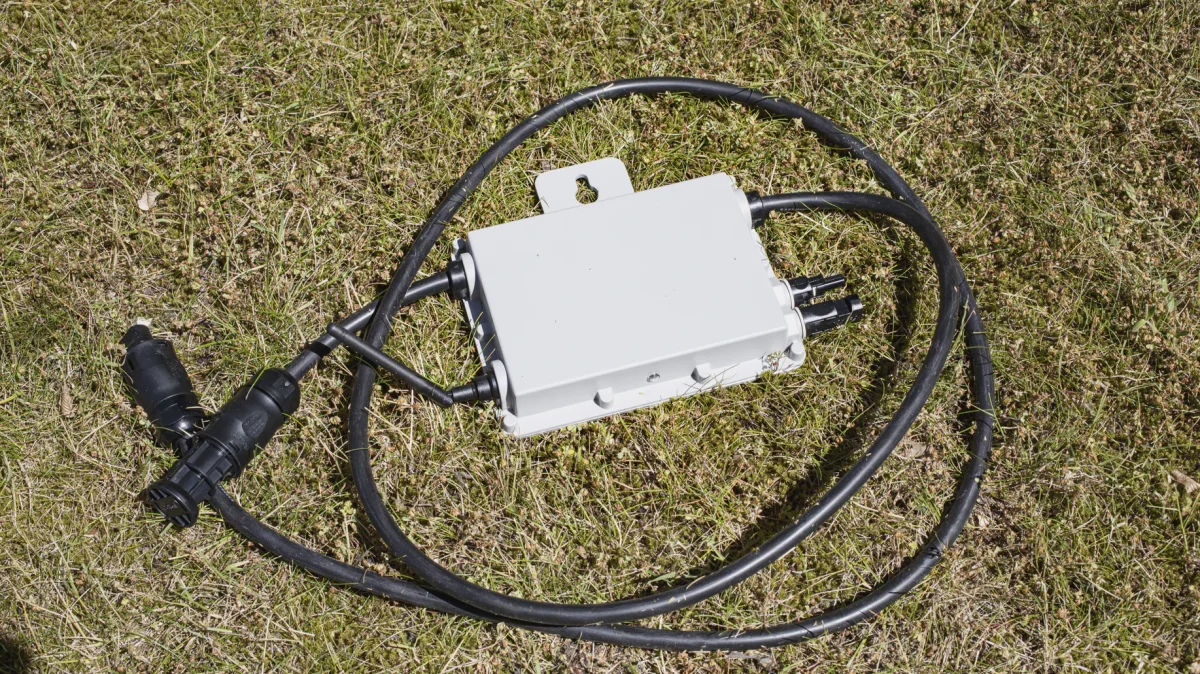Inverter from Deye: NA protection relay is missing
The electrical engineering YouTuber Dr. Jens-Peter Eufinger from the “VoltAmpereLux” YouTube channel discovered a manufacturing defect when disassembling a microinverter from the Chinese manufacturer Deye, which jeopardizes the operating license of the devices in Germany and some other countries.
The Deye SUN600G3 device is a typical micro-inverter for balcony power plants and, according to the manufacturer, meets the VDE-AR-N 4105 standard required here disconnects the AC side in case of device failures and abnormal grid situations.
This includes, among other things, the case that the grid fails or the inverter is disconnected from the grid. This separation achieved by so-called coupling switches must be redundant and galvanically separate at least at one point – a manufacturer can create redundancy, for example, by shutting down the inverter circuit on the software side on the one hand and separating it using relays on the other.
During his test, the YouTuber removed the casting compound and found that the soldering points intended for the relay were unoccupied. Instead, there is a coil in the area. The Deye SUN600G3, of which Eufinger opened two, lacks precisely this mechanical coupling switch required by the standard.
The find is surprising, because the inspection service provider intertek examined the microinverters on behalf of the manufacturer back in 2020 and certified their conformity with VDE-AR-N 4105. At that time, Deye not only submitted its 600-watt model to intertek for testing, but also those with 300, 500, 800, 1000, 1300, 1600, 1800, and 2000 watts of output power.
A Hongfa HF115F section switch is specified for all devices in the test certificate. Behind it is a 16 ampere relay with a switch-off time of 8 milliseconds. The relay is also mentioned in a more recent intertek certificate. Many details are currently unclear – it is not yet clear whether Deye shipped individual batches to Europe without the switch or changed the circuit board layout in general. It is conceivable that Deye sold products for other regions in Europe.
What is certain, however, is that devices without relays do not correspond to the certificate and Deye has to explain whether and how the redundant NA protection is otherwise fulfilled for the devices concerned.
There is no reason to panic at first, because if the inverters are working properly, their microcontrollers ensure that voltage generation is stopped immediately, even without a relay, if an error occurs or the plug is simply pulled. So far there have also been no reports of electrical faults in Deye devices.
Nevertheless, it is unclear whether the affected devices can continue to be operated until they are replaced and whether they otherwise meet the requirements of VDE-AR-N 4105. In particular, a reaction from the Federal Network Agency would be decisive. According to his own statements, Marc Niemann from the YouTube channel “marctestet” is in close contact with Deye.
In an interview with heise online, he said that several retailers are already discussing a solution for the affected devices with the manufacturer. Widespread Deye microinverters enjoyed great popularity last year, especially for balcony power plants, and are sold here under different brand names: Retailers call them revolt, and online shops also call them Bosswerk.
The manufacturer was one of the first to integrate evaluation via WLAN directly into the inverter, while many others required a separate, mostly expensive bridge for the proprietary wireless interface. In conjunction with a smartphone app, Deye offered a complete package that was easy to set up.
In particular, the discounter sets that appeared a few months ago often included Deye devices because of this simplicity, for example at Netto. It can therefore not be ruled out that tens of thousands or even hundreds of thousands of them are in use.
The Deye inverters made it into our coverage as early as March 2023. At that time, heise online reported that the delivered firmware prevented the built-in WLAN access point from being switched off or the key from being changed. Neighbors could have easily gained access to the inverter and home network.
Deye fixed the problem with a software update – a missing relay, on the other hand, is impossible to retrofit remotely.



